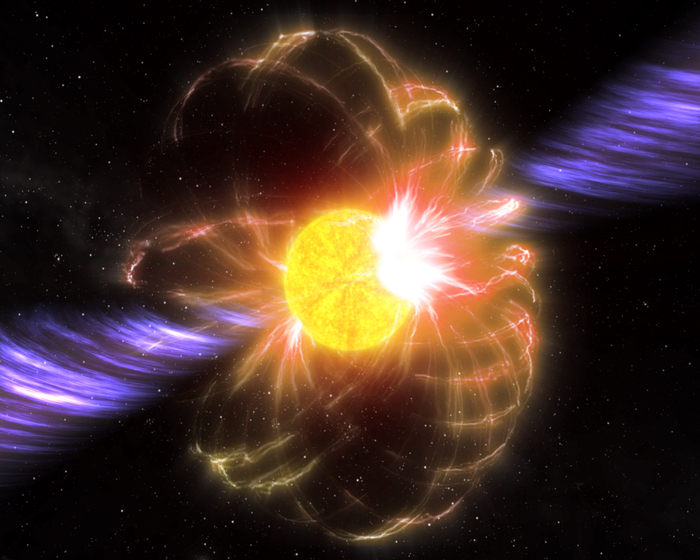Signals never seen before have been picked up by a 'super-magnetic' star previously thought to be dormant: it is a magnetar, a very dense neutron star which has an enormous magnetic field, billions of times higher than that of the Earth, and which emits radio pulses. This time, however, the signals are of a type never detected. They were intercepted by the research group led by the Australian National Research Council, Csiro, which used the large Murriyang radio telescope at the Parkes Observatory, the same one used by NASA to receive live television broadcasts of the Moon landing on the 20th July 1969. The study, published in the journal Nature Astronomy, will shed new light on extreme and unusual astrophysical phenomena, such as fast radio bursts and X-ray and gamma-ray bursts.
The magnetar XTE J1810-197, about 8,000 light-years away, is the closest such star to Earth. A radio signal from it was first observed in 2003, and it then remained silent until 2018, when radio signals were detected again, sparking the Australian study led by Marcus Lower. Detecting radio pulses coming from a magnetar is already extremely rare, but in this case the waves also appear to move in a spiral as they travel through space: "We've never seen anything like this before," comments Lower.
It's unclear why this magnetar behaves so differently. "Our results suggest that there is superheated plasma above the star's magnetic pole, acting as a polarizing filter, but how the plasma is causing this phenomenon is still unclear," Lower says. "The signals emitted by this magnetar - adds Manisha Caleb of the University of Sydney, co-author of the study - imply that the interactions on the surface of the star are more complex than previous theoretical explanations".
Reproduction reserved © Copyright ANSA

